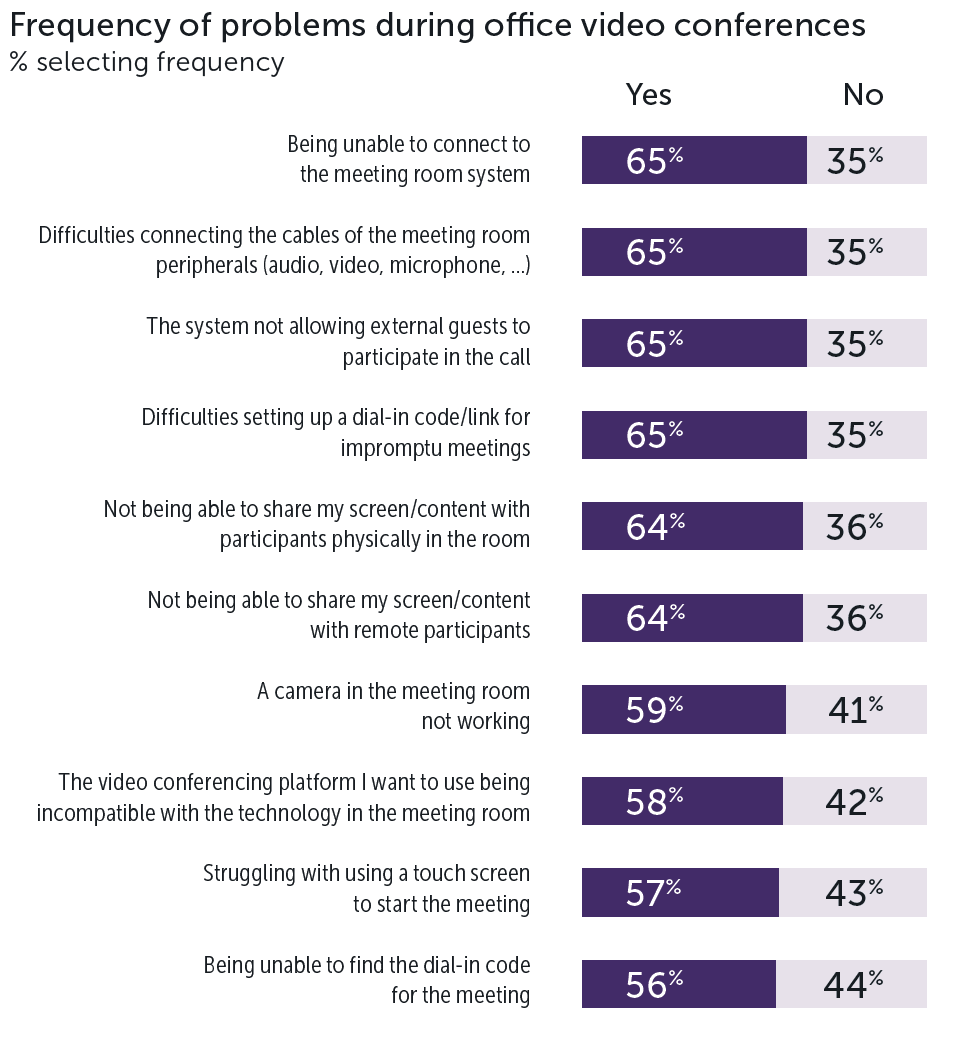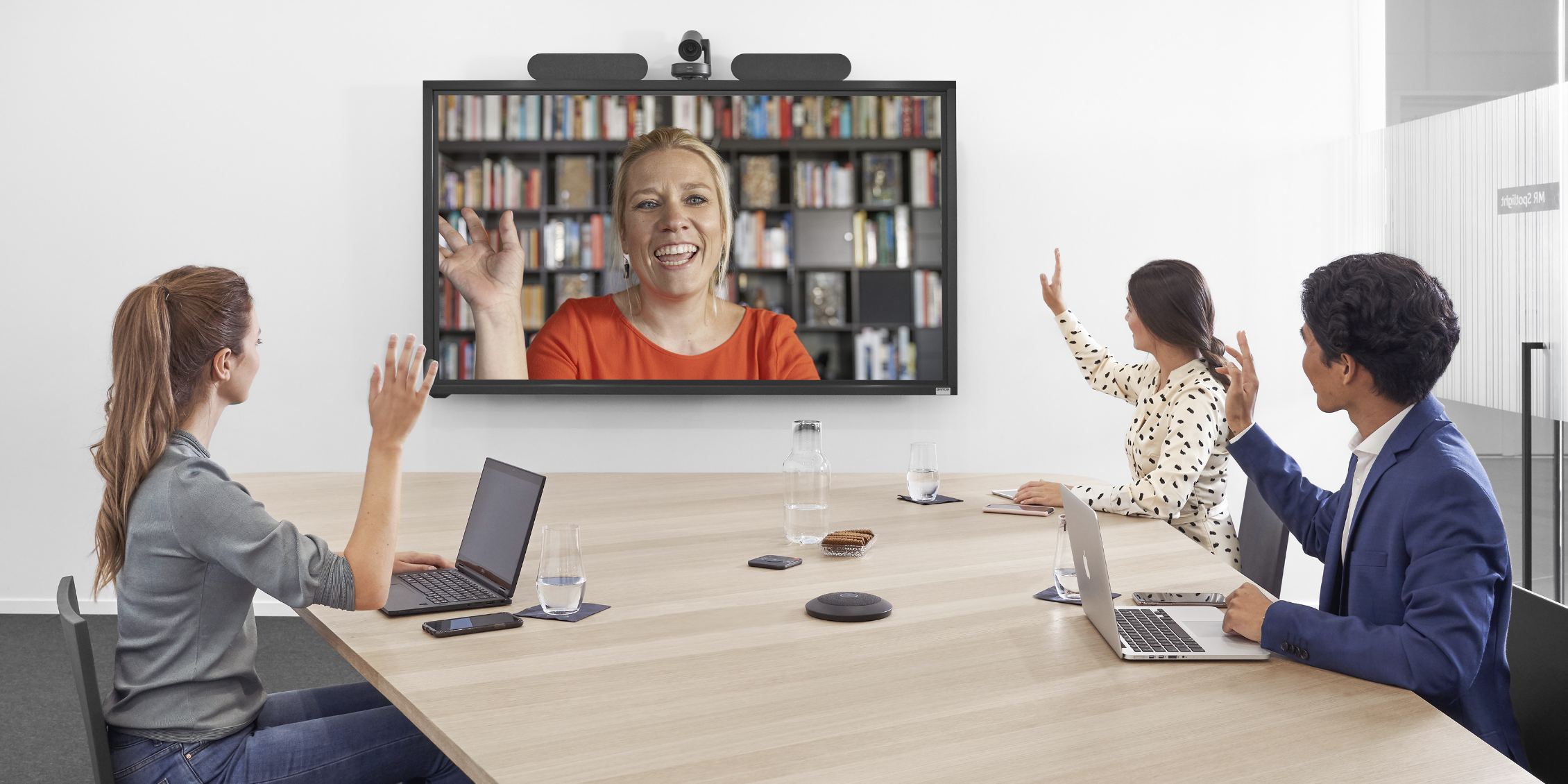At the first announcement that a vaccine for COVID-19 had been approved for distribution, there was a palpable collective sigh of relief that an end is in sight, and we will be able to return to life and work.
There are still several months ahead until the workforce will be able to return to 100 percent capacity, but planning for the return is happening at every level within corporate environments to determine the landscape of the new era of meeting room collaboration.
Warp-Speed Analysis
The work-from-home period that, for some, could last up to 18 months, has been an unwitting clinical trial in and of itself. Not only was there a large control group to measure productivity and sentiment, but employees were also forced to use video conferencing as a primary source to replace face-to-face meetings.
Numerous studies have reported that after a few months of working from home, the majority of the workforce has made it clear they want to return to the office for some part of, if not the full workweek.
A worldwide survey of office workers conducted by Barco in September 2020 supports these findings. “Eighty-five percent of the workforce wants to return to the office and resume the social aspect of working life that they have missed so much, albeit with the freedom, flexibility, and facilities to adopt a better blend of home and office working,” says Lieven Bertier, Segment Marketing Director Workplace at Barco.
The hybrid workplace is not a new concept. “COVID-19 has simply accelerated this trend and brought it more acutely into focus,” Bertier says. “Corporates now need to ask, ‘What do we want our hybrid working model to look like?’”
A Better Meeting Experience
During the past couple of years, Bring Your Own Meeting (BYOM) has been gaining momentum, and the work-from-home period has cemented this trend.
Having become comfortable with using their laptop or other personal device to launch a video conference and share content, workers aren’t ready to give up the ease-of-use of familiar software on their own device when they return to office.
When the office workers from the Barco survey were asked what office investments they would like to see their employers make, 26 percent said, “The ability to control meeting room technology from a laptop,” and 33 percent said, “Video-conferencing equipment for use in meeting rooms.”
While Zoom, Microsoft Teams and Skype were at the top, survey respondents cited 14 different conferencing tools that were used on a regular basis.
Frustration with using meeting room presentation and video conferencing equipment is not a new complaint. As AV/IT directors plan for expanding the footprint of collaboration spaces in the office, looking to the following stats from the Barco survey can help inform decision making:

For AV/IT directors and CIO’s, Bertier says the key questions become, “How am I going to provide this to my people? How can I make sure they can easily present and connect to a video conference?” The simple solution is BYOM: Walk into the room, plug in a Barco ClickShare button, automatically connect to all room USB peripherals, and use it in Zoom, BlueJeans, Microsoft Teams, or any of several other UC platforms.
Ensuring Secure Collaboration
The mere thought of every employee using their own laptop and flavor-of-the-day video conferencing platform is enough to send the IT department into a tailspin.
Barco has designed ClickShare from the ground-up with security in mind and uses the ISO/IEC 27001:2013 standard, which covers the full product life cycle. It is in place during the design, implementation, and testing process—defining secure-by-design. The standard specifies the requirements for establishing, implementing, maintaining, and continually improving an information security management system within the context of the organization.
2021 and Beyond
Only time will be the true measure of what percentage of workers will continue to work from home (or anywhere), and how many will be in the office full-time. It is widely accepted that the hybrid office is here to stay, but now is the time to ensure meeting room technologies are seamless to use to keep participants engaged and productive.
Click here to read Barco’s full report, “Finding a New Balance: How better hybrid meetings will improve collaboration and engagement in the workplace.”
Read the other five articles in the series BYOM: The New Normal in Today’s Workplace.
Cybersecurity and the New Hybrid Office
Creating Scalable Videoconference Solutions
Small Hybrid Meeting Spaces Drive Corporate Customers to Hotels

